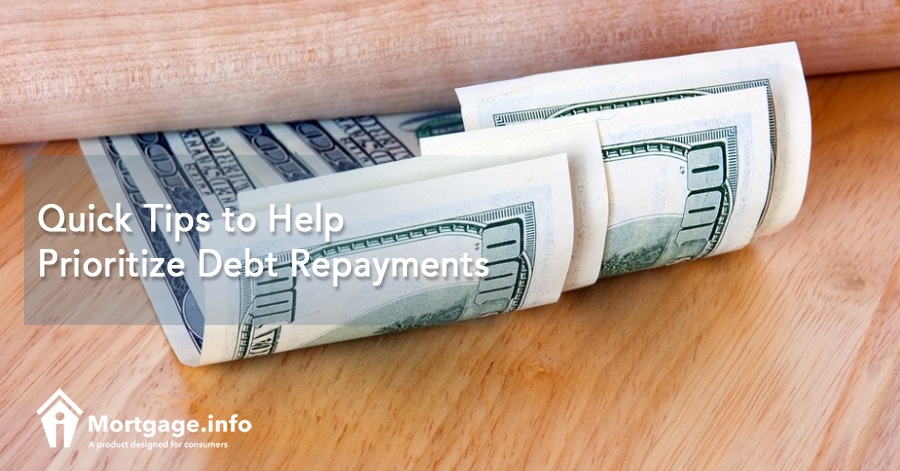
If you are in over your head in debt, it can feel overwhelming to figure out how to prioritize those payments. Even if you have extra money each month to get out of debt, how do you know where to start?
Looking for Current Mortgage Interest Rates? Click Here.
Keep reading to learn some helpful tips on how to get your debts prioritized.
Figure Out What You Have
The first step is to figure out what types of debts you are dealing with right now. You need the total balance due, the interest rate, and the minimum payment due.
With this information laid out, you can see what you have. For example, does one credit card have an exceptionally large balance? Is your interest rate sky high on another card? These are factors you want to consider when prioritizing your debts.
The next steps involve deciding how to attack that debt and get it paid down.
The Interest Conscious Consumer
Some people can’t stand the thought of paying interest. If that’s you, consider paying down the credit card with the highest interest rate first. The lower you get the balance on this card, the less interest you will pay in the end.
Keep in mind, you might end up paying down the highest balance credit card with this method. Don’t let it discourage you when you still have a long way to go. Every dollar you knock off that balance lowers the amount of interest you pay on your balance.
The Consumer That Loses Sleep Over High Balances
Some people aren’t as bothered by the interest as they are by high balances. If it’s hard for you to sleep at night knowing that one of your credit cards is near its limit, pay that balance down first. Any extra money you have to pay towards your debts, put towards that card. Again, just like we said above, don’t get discouraged when you don’t see the balance falling by leaps and bounds. Every dollar brings that balance down.
The Consumer That Needs Motivation
If you are the type of person that is driven by motivation, you may want to choose the card with the lowest balance first. As you pay extra money towards this card, you will pay the balance off in full. As you see that progress, you will hopefully be motivated to move onto the next highest balance in your hierarchy of debt.
Click to See the Latest Mortgage Rates.
A good way to attack your balances with this method is to pay the minimum payment plus the extra amount you can pay each month. Let’s say you can pay $80 per month on this card. Once you pay it off, continue making that $80 payment, but towards the next highest card. You’ll add that $80 to the minimum payment of the chosen card, to get that card paid down. You continue the trend until you are completely out of debt.
Where to Get Extra Funds
Now, there’s a foundational problem with any of these methods. Where do you get the extra money? Here are a few quick tips to give you ideas:
- Cut down on certain habits, such as eating out or coffee runs and put that money towards your debt
- Use any ‘windfalls’ to pay down your debt, such as tax refunds, work bonuses, gambling winnings, or gift money
- Use any ‘found money’ to pay down your debt, such as when you go under budget on your grocery bill or gasoline bill, use the extra funds to pay down debt
- Work a side gig at home in your free time to make a little cash to help you pay down your debt
- Work a part-time job if you have the time and use the income strictly to pay down your debt
Prioritizing your debt payments is the best way to get yourself in order. When you have a designated plan, it’s easier to see the progress you make towards that goal. If you just sporadically make payments towards your credit cards, you won’t see a rhyme or reason to your efforts and can become easily discouraged. Instead, make a plan and stick to it. If after six months or so you don’t feel as if it’s working, you can try another plan until you find the one that works for you.
